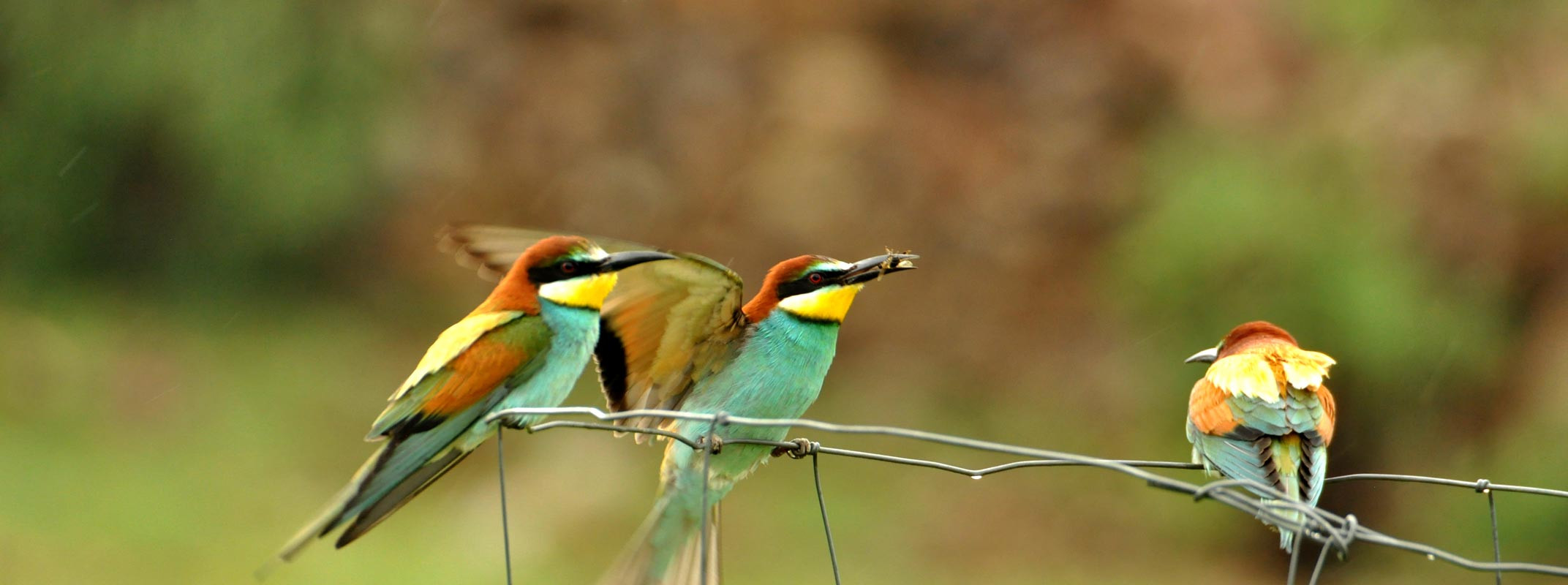

(Español, Deutsch, English)
Durante los últimos meses se ha realizado en la finca un desbroce selectivo de matorral mediante tractor con desbrozadora de cadenas. Este trabajo ha consistido en cortar el matorral a ras del suelo sin remover la tierra, con lo que es menos agresivo (no hay daño a las raíces de los árboles y menos erosión).
La reducción de la cubierta de matorral tiene un doble objetivo: disminuir el riesgo de incendios y aumentar la superficie de pastos que sirva de alimento al ganado y a la fauna silvestre.
El criterio seguido al desbrozar ha sido de conservar toda la regeneración natural (todos los nuevos pequeños árboles que crecen entre el matorral) además de parte del matorral de tres formas distintas:
1. Fajas de matorral perpendiculares a la pendiente del terreno.
2. Orlas de matorral a ambos lados de vaguadas y barrancos por los que corre el agua cuando llueve.
3. Manchas de matorral en zonas de mucha pendiente o con mucha regeneración natural.
En las siguientes fotos se ve una misma zona antes y justo después del desbroce.
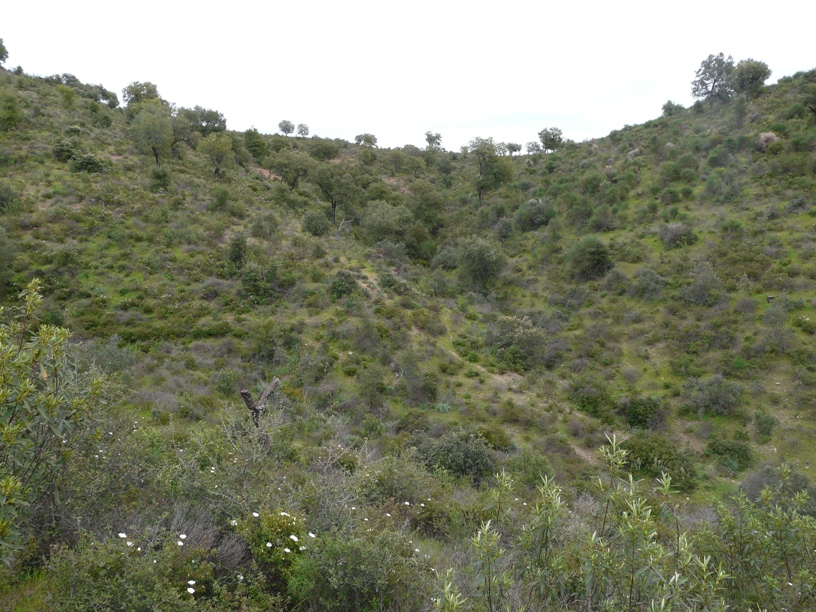
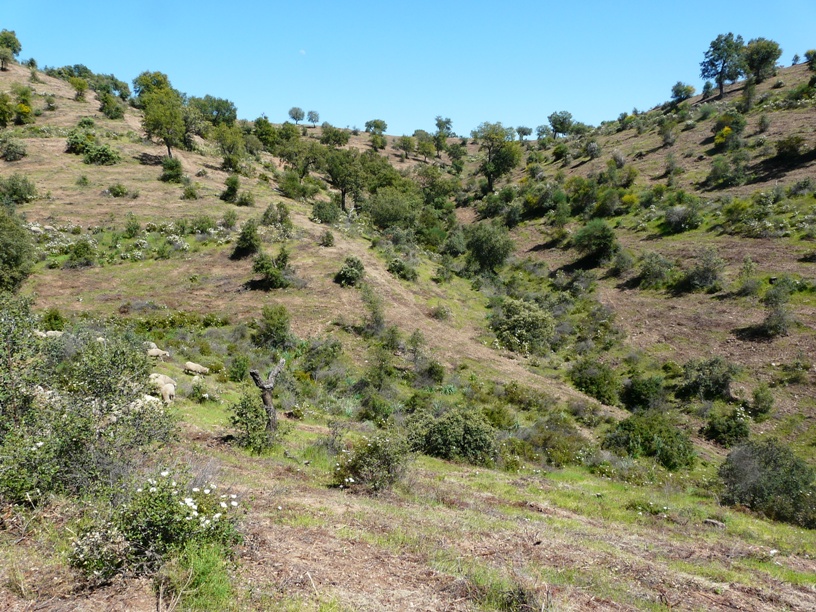
Con estas medidas se consigue reducir mucho la erosión y se crea un paisaje más variado donde se conservan lugares de refugio para la fauna, sin comprometer la protección frente a incendios y el aumento de la superficie pastable.
Gran parte de la superficie desbrozada se encuentra en la zona de actuación a favor del águila imperial donde se han construido majanos y se han soltado conejos. La distribución de las zonas de matorral se ha hecho de manera que cada majano tiene algún refugio natural a menos de 40 metros.
En el siguiente plano se observa la distribución de majanos y del matorral conservado.
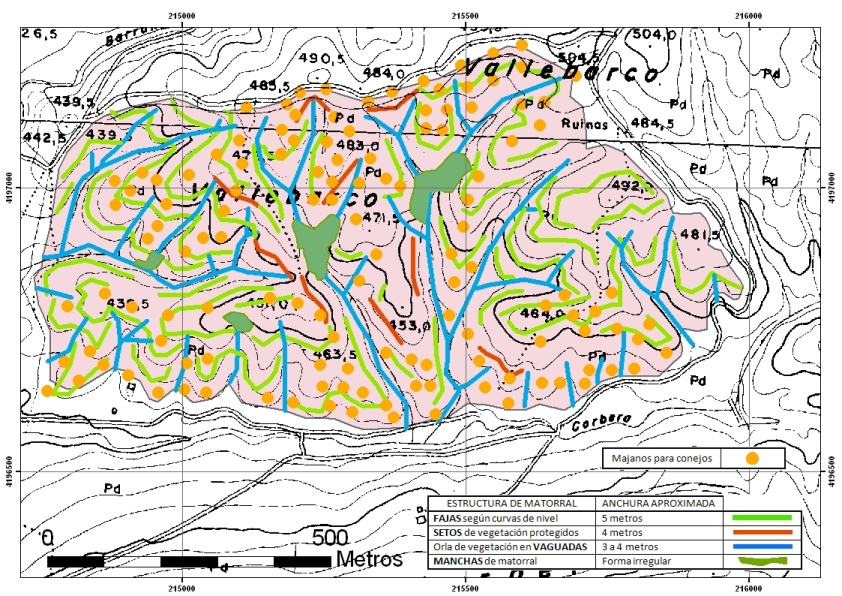
Esta actuación está cofinanciada por el Fondo Europeo Agrícola al Desarrollo Rural (FEADER) y la Junta de Andalucía a través de las ayudas para la Gestión Sostenible del Medio Natural.
“CHIRURGISCHE” ENTBUSCHUNG AUF DER EN DEHESA SAN FRANCISCO
In den letzten Monaten hat auf der Finca eine selektive Entbuschung mitTraktor und Kettenmulcher stattgefunden. Die Arbeiten bestanden darin, das Buschwerk kurz über dem Boden abzuschneiden, ohne dabei die Erde zu bewegen; so ist der Eingriff weniger aggressiv, die Wurzeln der Bäume werden nicht verletzt und die Erosionsgefahr ist geringer.
Die Verringerung der Strauchschicht verfolgt zwei Ziele: die Verringerung der Brandgefahr und die Vergrösserung der Weidefläche, die Nutz- und Wildtieren zur Verfügung steht.
Bei den Arbeiten wurde darauf geachtet, die Naturverjüngung (kleine, junge Bäume, die zwischen den Büschen und Sträuchern entstehen) zu schützen. Für das Buschwerk galt:
1. Bildung von Buschkorridoren quer zum Hang.
2. Büsche säumen die Ränder von Gräben und Furchen, die bei Regen Wasser führen.
3. Inseln mit Buschwerk an den Stellen, wo starkes Gefälle ist oder viel Naturverjüngung.
Auf folgenden Fotos ist ein Gebiet vor und unmittelbar nach der Entbuschung zu sehen.


Diese Massnahmen sind ein wesentlicher Beitrag zur Verringerung der Erosion und sie schaffen eine abwechslungsreichere Landschaft mit Rückzugsmöglichkeiten für Tiere, ohne dabei den Brandschutz zu beeinträchtigen. Zusätzlich wird so auch noch Weidefläche geschaffen.
Ein Grossteil der bearbeiteten Flächen befindet sich in dem Gebiet, wo Massnahmen zugunsten des Kaiseradlers durchgeführt worden sind: Anlegen von Kaninchenbauten und Aussetzen von Kaninchen. Die Strauch- oder Buschinseln wurden so angelegt, dass in weniger als 40 m Entfernung von jedem Kaninchenbau ein natürlicher Zufluchtort besteht.
Auf folgendem Plan sind die Kaninchenbauten und die Buschinseln eingetragen.
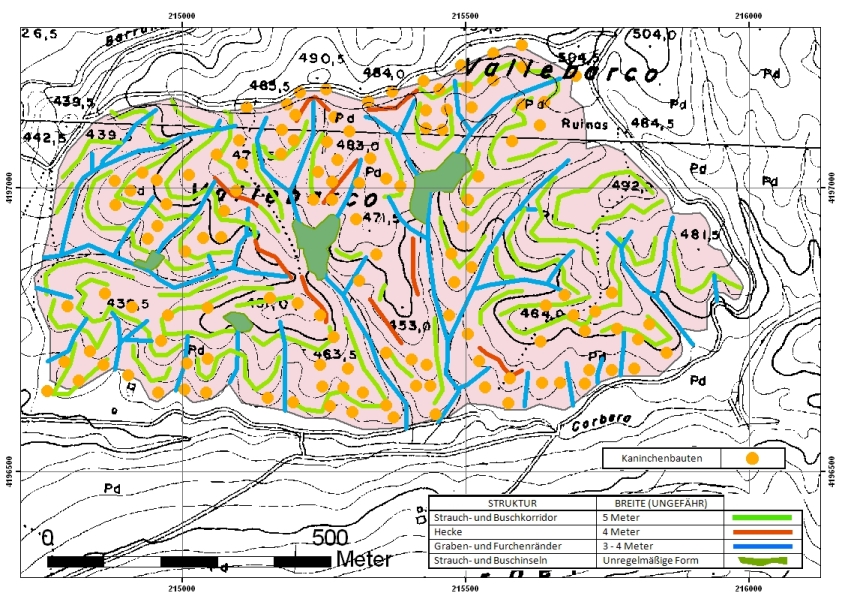
Die Arbeiten wurden kofinanziert von dem EU-Fond FEADER und der Andalusischen Landesregierung im Rahmen eines Subventionsaufrufes "Nachhaltige Bewirtschaftung natürlicher Räume“.
“SURGICAL” BRUSH OUT ON DEHESA SAN FRANCISCO
During the last months, a selective brush out has taken place on the finca. The work consisted in cutting the bushes just over the soil without touching or moving it. This makes it less aggressive, no damage at the roots of the trees and less risk of erosion.
The reduction of the brushwood pursues two aims: reduce risk of fire and aggrandize pasture land for life-stock and wild animals.
Realizing the work, natural regeneration (young, small trees which grow between bushes and shrubs) has been protected.
For the bushes and shrubs the following points were taken in account:
1. Creation of corridors of bushes and shrubs crossways to the slope.
2. Leave bushes and shrubs on the sides of the cuts and gullies which carry water when it rains.
3. Leave islands of bushes and shrubs where there are steep slopes or a lot of natural regeneration.
On the following photos you can see an area before and immediately after the brush out.


Main part of the areas we have worked on is where several measures for the imperial eagle had been realized: construction of rabbit burrows and rewilding of rabbits. The islands of shrubs and bushes have been distributed in a way so that no further than 40 m to a rabbit burrow there is always a natural shelter.
On the following map you can see the rabbit burrows and the islands.
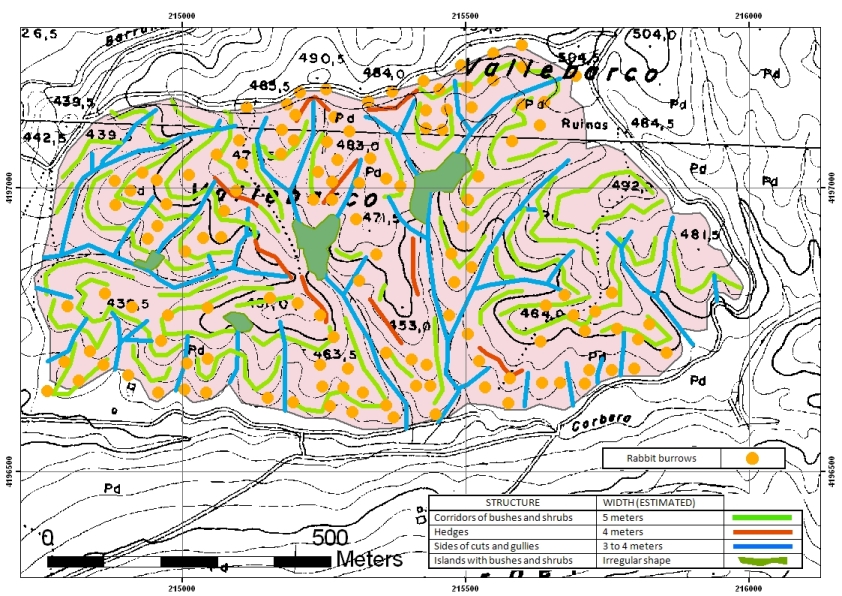
The project has been cofinanced by the EU-Fond FEADER and the Andalusian Government within a subsidy call for "Sustainable Management of natural spaces".
